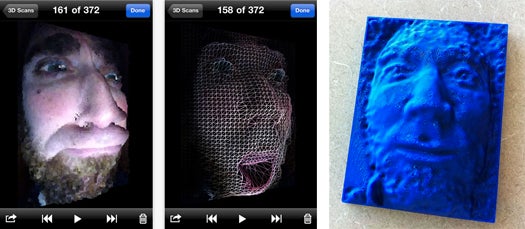Trimensional iPhone App Takes 3-D Scan of Your Face, Sends to 3-D Printer to Produce Face Tchotchkes
3-D scanning shouldn’t be limited to expensive equipment in labs. Developers have started to use increasingly powerful consumer electronics to...

3-D scanning shouldn’t be limited to expensive equipment in labs. Developers have started to use increasingly powerful consumer electronics to do what just a few years ago was well out of the reach of consumers. Grant Schindler’s Trimensional app for the iPhone 4 is one of those–and it just got an update to allow it to export your 3-D facial scans to a 3-D printer.

Grant Schindler, a research scientist at Georgia Tech, released the Trimensional iPhone app back in January to make use of the iPhone 4’s front-facing camera beyond video chat. It takes advantage of the iPhone’s bright screen to make its 3-D scans: The app bounces light off the user’s face from four different angles, combining the resulting images into a 3-D map. It’s limited to essentially the front half of your face (the part with the eyes and nose and mouth on it, you know the one)–to map your entire head would require either some very precise movement or, as in the recent Kinect art installation, several different cameras.
Recently released is an update that allows you to send a movie or animated .GIF file by email, and a new in-app purchase (only $5; the app itself costs $1) that adds the ability to send the scan to a 3-D printer. Given our current obsession with 3-D printers (we’ve recently published both an animated walkthrough and a look at the future of the technology), this is the part that’s really exciting to us. Trimensional’s algorithms can only scan faces, but the possibility is there to scan just about anything, and reproduce it incredibly easily and cheaply.
For the time being, those lucky enough to have an iPhone 4 (or current-generation iPod Touch, or iPad 2, or, soon, an Android device, as Schindler is working on an Android version) as well as a 3-D printer can fill up their houses with 3-D representations of their faces. And why wouldn’t they?
[via PhysOrg]